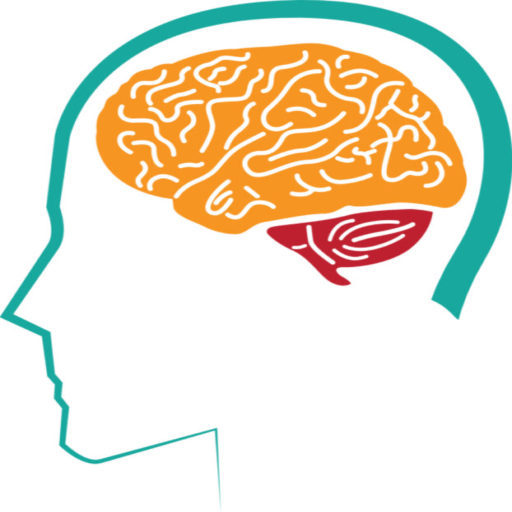Introduction
Exercise is often celebrated for its physical health benefits, but its positive impact on mental well-being is equally remarkable. For individuals dealing with depression, incorporating regular physical activity into their lives can be a transformative tool for mood enhancement and overall mental health improvement. In this article, we will explore the science behind the relationship between exercise and mood, provide practical tips for incorporating exercise into daily routines, and offer strategies for overcoming common barriers to physical activity for people with depression.
The Science of Exercise and Mood Enhancement
Neurochemical Changes
Engaging in physical activity triggers the release of various neurochemicals in the brain, including endorphins, serotonin, and dopamine. These chemicals play essential roles in mood regulation and are often referred to as “feel-good” neurotransmitters.
- Endorphins: Exercise stimulates the production of endorphins, which are natural painkillers and mood lifters. They create a sense of euphoria and well-being.
- Serotonin: Physical activity increases the availability of serotonin, a neurotransmitter that regulates mood, sleep, and appetite. Low serotonin levels are associated with depression, and exercise can help alleviate this deficiency.
- Dopamine: Exercise boosts dopamine, the brain’s reward system. Increased dopamine levels can enhance motivation and pleasure, counteracting the anhedonia (loss of interest or pleasure) often experienced in depression.
Stress Reduction
Exercise also acts as a stress reliever. It reduces the production of stress hormones like cortisol and stimulates the release of endorphins, which create a calming effect. Regular exercise can help individuals manage the stressors that contribute to depressive symptoms.
Neurogenesis and Brain Health
Physical activity promotes neurogenesis, the formation of new brain cells, particularly in the hippocampus—the brain region responsible for memory and emotions. This process is thought to play a role in improving mood and cognitive function.
Practical Tips for Incorporating Exercise
Start Small and Set Realistic Goals
For individuals new to exercise or those experiencing depression, it’s crucial to start with manageable goals. Begin with short, low-intensity activities, such as a ten-minute walk, and gradually increase duration and intensity as fitness improves.
Find Enjoyable Activities
Exercise doesn’t have to mean going to the gym or engaging in structured workouts. Finding activities that bring joy, such as dancing, hiking, swimming, or playing a sport, can make exercise more enjoyable and sustainable.
Establish a Routine
Consistency is key to reaping the mental health benefits of exercise. Establish a regular exercise routine by scheduling specific times for physical activity. Consistency helps build momentum and makes exercise a habit.
Mix It Up
Variety can keep exercise interesting and prevent boredom. Incorporate a mix of aerobic exercises (e.g., walking, jogging), strength training (e.g., weightlifting, bodyweight exercises), and flexibility exercises (e.g., yoga, stretching) into your routine.
Socialize Through Exercise
Exercise can be a social activity. Joining a group fitness class, walking with a friend, or participating in team sports can provide social support and motivation.
Listen to Your Body
Pay attention to how your body responds to exercise. If you’re fatigued or experiencing discomfort, it’s okay to take a break or adjust your activity level. Be mindful of your physical and emotional needs.
Set Realistic Expectations
Recognize that exercise is not a quick fix for depression. While it can provide immediate mood enhancement, the long-term benefits come with consistent effort over time. Be patient and compassionate with yourself.
Overcoming Barriers to Physical Activity
Lack of Motivation
Depression often leads to a lack of motivation, making it challenging to initiate exercise. In such cases, it can be helpful to start with small, manageable goals and enlist the support of a friend or therapist to provide motivation and accountability.
Fatigue
Depression can result in persistent fatigue, which may make exercise feel daunting. To overcome this barrier, choose low-intensity activities, engage in short workouts, and prioritize rest and recovery.
Self-Criticism
Negative self-talk and self-criticism are common in depression. Challenge these thoughts by focusing on the positive aspects of exercise, such as the immediate mood lift and improved self-esteem.
Fear of Judgment
Some individuals with depression may fear judgment from others when exercising in public. Consider exercising in a private setting, like at home or in a less crowded environment, until confidence and comfort levels increase.
Physical Limitations
Depression may co-occur with physical health conditions that limit exercise options. Consult with a healthcare provider to identify safe and suitable activities. Even individuals with physical limitations can often engage in some form of physical activity.
Conclusion
Exercise is a potent tool for managing depression and improving mental health. The science behind the mood-enhancing effects of exercise, including neurochemical changes, stress reduction, and brain health benefits, underscores its significance in depression management.
Practical tips, such as starting small, finding enjoyable activities, establishing routines, and incorporating variety, can help individuals incorporate exercise into their daily lives. Socializing through exercise and listening to one’s body are additional strategies to enhance the exercise experience.
While depression can present barriers to physical activity, including lack of motivation, fatigue, self-criticism, fear of judgment, and physical limitations, these challenges can be addressed with patience, support, and self-compassion.
Ultimately, exercise offers individuals with depression a powerful means of improving mood, enhancing self-esteem, and contributing to their overall mental well-being. By incorporating exercise into their lives and seeking professional guidance when needed, individuals can take proactive steps toward managing depression and improving their quality of life.
References
- Craft, L. L., & Perna, F. M. (2004). The Benefits of Exercise for the Clinically Depressed. Primary Care Companion to the Journal of Clinical Psychiatry, 6(3), 104-111.
- Mikkelsen, K., Stojanovska, L., Polenakovic, M., Bosevski, M., & Apostolopoulos, V. (2017). Exercise and Mental Health. Maturitas, 106, 48-56. https://doi.org/10.1016/j.maturitas.2017.09.003
- Schuch, F. B., Vancampfort, D., Firth, J., Rosenbaum, S., Ward, P. B., Silva, E. S., … & Stubbs, B. (2018). Physical Activity and Incident Depression: A Meta-Analysis of Prospective Cohort Studies. American Journal of Psychiatry, 175(7), 631-648. https://doi.org/10.1176/appi.ajp.2018.17111194
- Rebar, A. L., Stanton, R., Geard, D., Short, C., Duncan, M. J., & Vandelanotte, C. (2015). A Meta-Meta-Analysis of the Effect of Physical Activity on Depression and Anxiety in Non-Clinical Adult Populations. Health Psychology Review, 9(3), 366-378. https://doi.org/10.1080/17437199.2015.1022901

